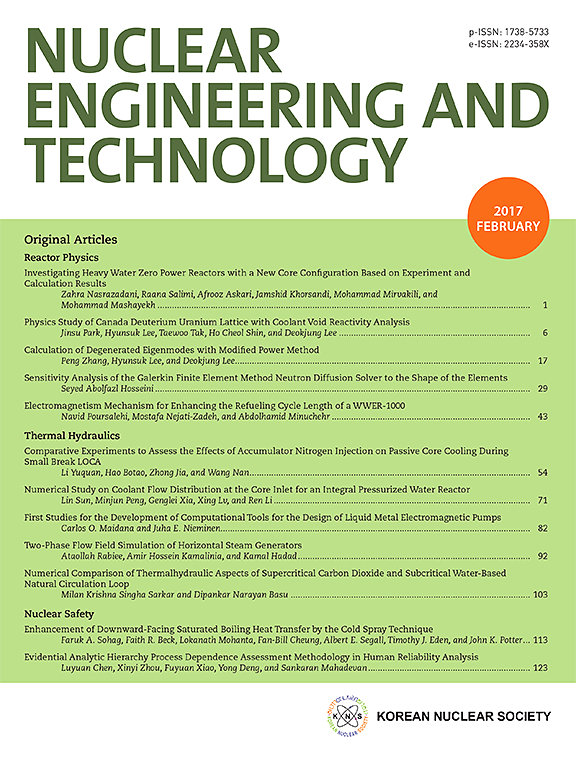对电子系统热特性的研究以及通过机器学习预测芯片温度
IF 2.6
3区 工程技术
Q1 NUCLEAR SCIENCE & TECHNOLOGY
引用次数: 0
摘要
本研究探讨了核电站电子系统 CPU 和 FPGA 的热特性和稳态温度 (SST)。对测试过程进行了有限元分析模拟。此外,还使用了三种机器学习算法来预测不同工作条件下的芯片温度。结果发现,当环境温度为 20 °C、所有风扇关闭时,CPU 和 FPGA 的 SST 分别达到 75 °C 和 72 °C。而当风扇开启时,CPU 和 FPGA 的 SST 分别降至 37.5 ℃ 和 33 ℃。当环境温度升至 55 ℃ 且所有风扇都打开时,CPU 和 FPGA 的 SST 分别为 72.3 ℃ 和 68.2 ℃。有限元模型经过验证并用于生成测试数据。通过预测 CPU 和 FPGA 在不同工作条件下的 SST,验证了三种机器学习模型。结果发现,M-SVR 的预测能力优于 DT 和 ANN。研究结果可用于其他电子系统设备的芯片可靠性评估,并为预测芯片在不同工作条件下可能出现的稳态温度提供了一种新方法。本文章由计算机程序翻译,如有差异,请以英文原文为准。
Investigation on the thermal characteristics of electronic system and prediction of chip temperature by machine learning
In this work, the thermal characteristics and steady-state temperatures (SST) of CPU and FPGA of electronic system in nuclear power plant are explored. Finite element analysis is performed to simulate the test process. Furthermore, three machine learning algorithms are used to predict chips temperatures at different operating conditions. It is found that when the ambient temperature is 20 °C and all the fans are power-off, the SST of the CPU and FPGA reaches 75 °C and 72 °C, respectively. While when the fans are power-on, the SST of the CPU and FPGA drops to 37.5 °C and 33 °C. When the ambient temperature increases to 55 °C and all the fans are power-on, the SST of the CPU and FPGA is 72.3 °C and 68.2 °C, respectively. The finite element model is verified and used to generate test data. Three machine learning models are verified by predicting the SST of CPU and FPGA under different operating conditions. It is found that M-SVR has better prediction ability than DT and ANN. The findings can be used for chip reliability evaluation of other electronic system devices, and provide a new method for predicting the possible steady-state temperature of chips under different service conditions.
求助全文
通过发布文献求助,成功后即可免费获取论文全文。
去求助
来源期刊

Nuclear Engineering and Technology
工程技术-核科学技术
CiteScore
4.80
自引率
7.40%
发文量
431
审稿时长
3.5 months
期刊介绍:
Nuclear Engineering and Technology (NET), an international journal of the Korean Nuclear Society (KNS), publishes peer-reviewed papers on original research, ideas and developments in all areas of the field of nuclear science and technology. NET bimonthly publishes original articles, reviews, and technical notes. The journal is listed in the Science Citation Index Expanded (SCIE) of Thomson Reuters.
NET covers all fields for peaceful utilization of nuclear energy and radiation as follows:
1) Reactor Physics
2) Thermal Hydraulics
3) Nuclear Safety
4) Nuclear I&C
5) Nuclear Physics, Fusion, and Laser Technology
6) Nuclear Fuel Cycle and Radioactive Waste Management
7) Nuclear Fuel and Reactor Materials
8) Radiation Application
9) Radiation Protection
10) Nuclear Structural Analysis and Plant Management & Maintenance
11) Nuclear Policy, Economics, and Human Resource Development
 求助内容:
求助内容: 应助结果提醒方式:
应助结果提醒方式:


